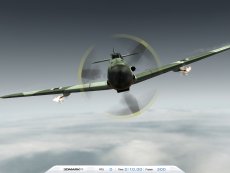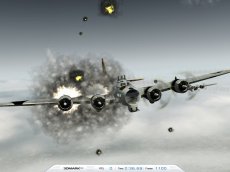Well, we've had a release of a new DirectX API late last year, with the introduction of DirectX9, and we've had DirectX9 capable hardware much before that in the form of the Radeon 9500/9700 and the upcoming GeForce FX series, isn't it about time we saw a new version of everyone's favourite 3D benchmark? Well, as if on cue, Futuremark Corporation (formerly MadOnion) have released 3DMark03 and Beyond3D has been given the opportunity to test the software early.
3DMark03 Overview
In some respects the plan behind 3DMark03 appear to be "If it ain't broke don't fix it". With this latest version you'll see a very familiar testing system, with 4 main game tests that comprise the overall score for the benchmark, and also they'll be a number of feature tests that provide further analysis of the 3D board and overall system. Naturally, however, all the game tests have been overhauled and are completely new in order to better reflect the current and future market trends in 3D capabilities and feature adoption within games, and we also get a number of other enhancements to boot.
As shader capable 3D hardware proliferates through the market developers are increasingly targeting shader programming as the basis for game engines. Futuremark want to represent this change, hence more of the game tests require shader hardware to operate. The 3DMark03 game tests now comprises only one DX7 test, with two DX8/DX8.1 tests and a DX9 test. First, we'll take a closer look at each of the game tests and the details behind them.
3DMark03 Game Tests
Game Test 1: "Wings of Fury"
The first game test is set in 1944 with a bomber squadron approaching its target in enemy lines and being attacked. The scene is meant to be reflective of a combat flight simulator, but much of it is taken from an external camera position.
The game test itself is the only DX7 test of the four in 3DMark03. With the majority of legacy hardware out there still being non-shader capable, this test is there to represent much of those users. Of all the tests, DX7 class boards will only be able to run this single test, so obviously their overall 3DMark score will be very limited.
Although the test is billed as a DX7 test, its not exclusively so as, curiously, Futuremark have opted to use Vertex Shaders for the geometry processing rather than fixed functional T&L, which is what was introduced with DX7. 3DMark03 is designed as a DX8 and DX9 test, but studies conducted by Futuremark indicated that plenty of DX7 games would still become available over the coming year, so some representation in 3DMark03 was required, however they still signal 3DMark2001SE as a more definitive DX7 test. Vertex Shaders are able to operate fine over the CPU, so there will be no issues with non-shader hardware not being able to run this test, however they will be more dependant on the CPU than DX8 or above hardware that is hardware Vertex Shader capable.
Much of the scene is taken up by the background and sky, which is only single textured, meaning that the fill-rate requirements of this test are conservative - not a bad thing seeing as even the highest end DX7 class boards has much lower fill-rates available to it than much of the current crop of cards. The planes on the other hand are where most of the scene geometry goes and use up to 4 texture layers. A basic colour map is used to generate the plane colours and decals, per pixel lighting effects are achieved on the planes via the use of Cube maps and a gloss map is used to generate more reflective areas of the plane. The per-pixel features used are available in DX7 compliant hardware, but require the use of Cube maps and MODULATE 2X texture blending -- the Cube map requirement will alienate PowerVR KYRO hardware from this test, and hence 3DMark03 altogether.
This test also makes use of particle systems such as hardware accelerated point sprites and quad particles. Point Sprites can be used in such areas such as the trails from the planes engines, however Point Sprites cannot be independently scaled or rotated. Where such control is required, such as when there is an explosion, the quad particles are utilised.
Game Test 1 Technical Summary:
- DX7 hardware with Cube Mapping and MODULATE2X Hardware support required
- 32MB onboard memory required to ensure no host texture uploading during the test
- Vertex Processing via VS1.1
- Plane detail produced with 4 texture layers (hardware with support for 4 textures per pass will execute plane detail in a single pass)
- Point Sprite and Quads particles
- ~32,000 triangles per frame
- 16MB video memory is used for textures, 6MB for vertex buffers and 1MB for index buffers



